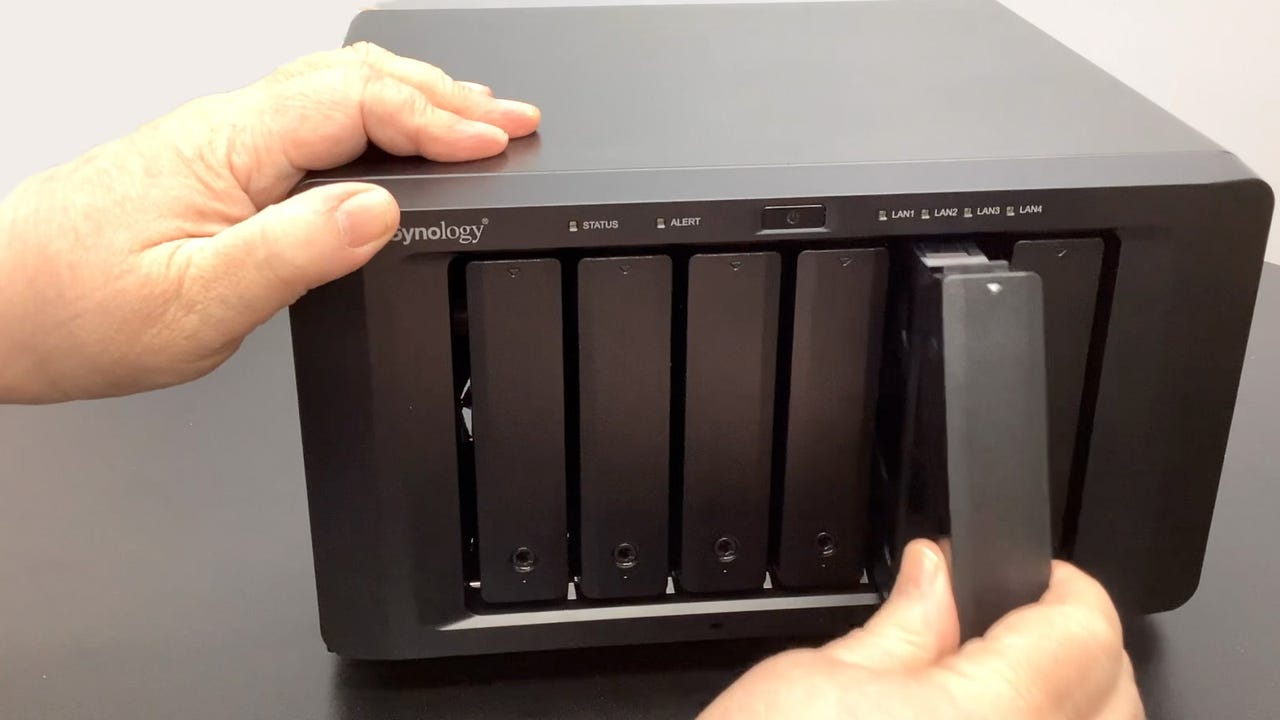































 David Gewirtz/
David Gewirtz/ World Backup Day, celebrated on March 31, is "a day for people to learn about the increasing role of data in our lives and the importance of regular backups." Because backups are so important, we decided to commemorate this event by showing you how easy it is to set up your own backup NAS (which stands for network-attached storage).
Also: The best external hard drives you can buy
A NAS is a dedicated little computer designed to hold hard drives or SSDs and protect your data.Typically, it supports more than one drive and has the ability to recover, even if one drive fails. We're going to be showing you how easy it is to set up your own NAS using theSynology 1621+ six-bay NAS .
What you need:NAS devices come in a wide range of configurations. At the very minimum, you should make sure you get one that supports two drives, so if one drive fails, your data is still protected. Most NAS devices come with their own file sharing software, so all you have to do is set up and configure the device, and then use whatever backup program you prefer to save your data. The setup process should take about 15 minutes or less.
As the accompanying video shows, sometimes getting the devices out of their original boxes can be the hardest part of the process. In this case, the Synology 1621+ is in a box.
Also: How to easily back up your Mac onto a USB drive (and feel like James Bond doing it)
Once it is unpacked, the next step is to remove all of the drives from their packaging.
Nearly all NAS devices have a carrier or mounting tray for each hard drive. Some require you to use screws to attach the drives, but the device we're demonstrating has little plastic tabs that secure the drives to the tray. Once each drive is put in the tray (with the connectors on the drive facing away from the front of the tray), all that's required is to slide the tray into the NAS until it snaps in securely.
Then, move the NAS to its working location, plug in a network cable and power cord, and turn it on.
For the Synology, software setup is quite straightforward. Find the device on the LAN by typing in http://find.synology.com. This URL will initiate a discovery process that will quickly find the new NAS.
Also: How to back up your files in Windows 10 and 11 with File History
Then all you have to do is follow the steps, answer a few questions, and set up the share. Follow the steps in the video and you'll be all set.
In my comprehensive guide to backups, I talk about the industry's recommended 3-2-1 backup practice. "If it's important or irreplaceable, back it up, now. Having a practical 3-2-1 strategy in place is an essential insurance against an unpredictable loss, offering peace of mind in knowing that data is safe and protected," says Ravi Pendekanti, senior vice president of HDD Product Management and Marketing at Western Digital.
The idea is to have at least three copies of every file, two of which are on different physical devices, and one of which is located off-site. The NAS we're setting up gets you part of the way there. It gets you copies of files on two different devices. But it doesn't help you with backing up off-site. That's next.
I recommend three approaches: Backing up to the cloud, backing up to a NAS at another location, or simply storing your files on a backup drive and then moving that drive to another location. Depending on your setup, you might use a combination of these approaches. I've been favoring cloud recently, but if you have an office and home in different areas, sharing data between both locations is also a viable strategy.
Well, sort of. Here's the thing. You don't need a NAS. But a single external drive won't protect you if that drive fails. NAS devices use RAID architecture for their file system, which means that even if one drive fails, the other (or others) will pick up the slack. Also, if you use just one external drive, you need to make sure you also have a way to store copies of your files off-site at a different location. That could be just swapping external drives, but you have to remain diligent. You don't have to spend for a NAS, but if you don't, you'll need to practice best practices on your own and take some extra care with your data management.
You can follow my day-to-day project updates on social media. Be sure to follow me on Twitter at @DavidGewirtz, on Facebook at Facebook.com/DavidGewirtz, on Instagram at Instagram.com/DavidGewirtz, and on YouTube at YouTube.com/DavidGewirtzTV.
 Tags chauds:
réseautage
Tags chauds:
réseautage